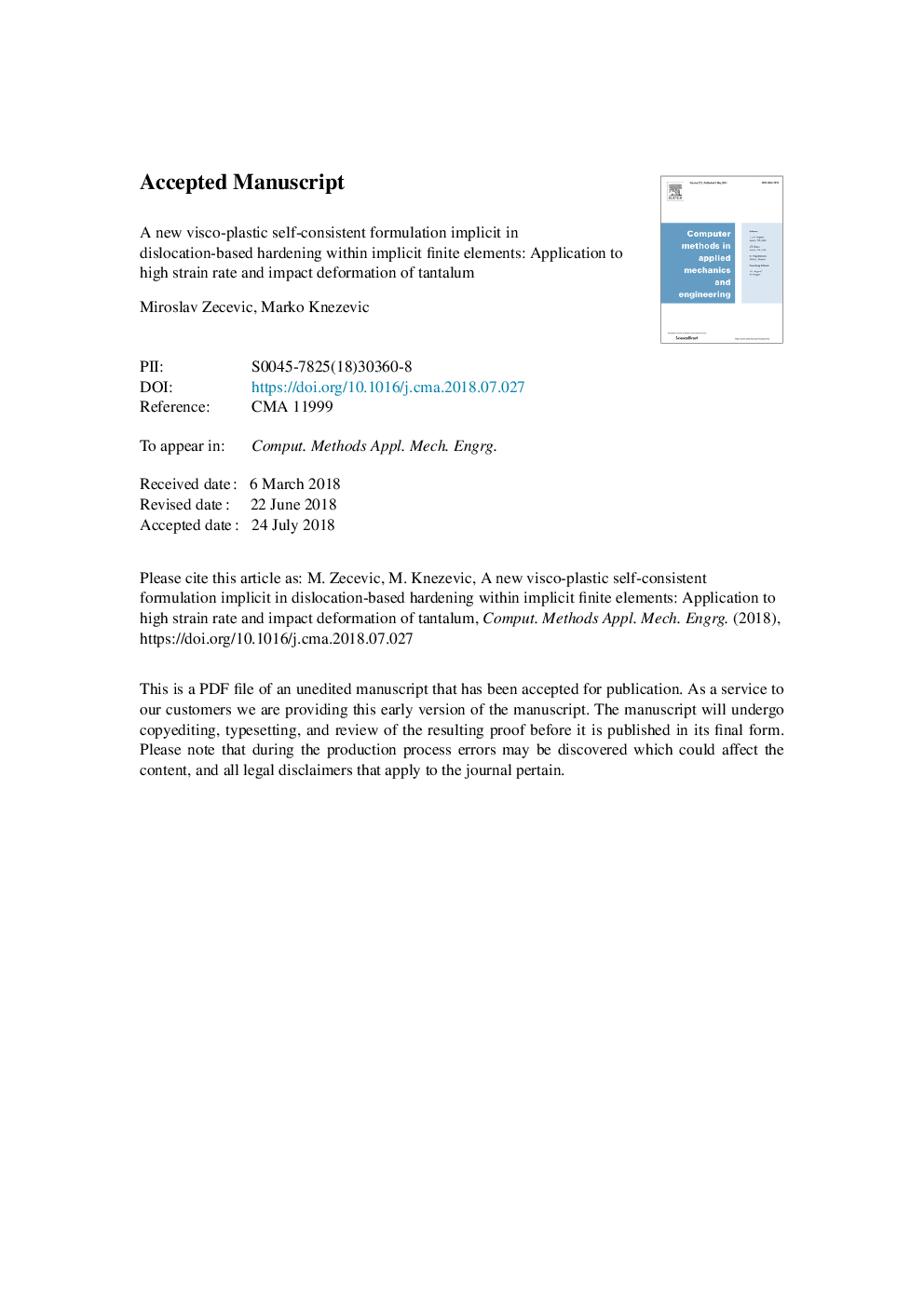| کد مقاله | کد نشریه | سال انتشار | مقاله انگلیسی | نسخه تمام متن |
|---|---|---|---|---|
| 6915293 | 1447394 | 2018 | 50 صفحه PDF | دانلود رایگان |
عنوان انگلیسی مقاله ISI
A new visco-plastic self-consistent formulation implicit in dislocation-based hardening within implicit finite elements: Application to high strain rate and impact deformation of tantalum
ترجمه فارسی عنوان
فرمول جدید خودکفایی ویزو پلاستیکی جدیدی که در سخت شدن بر اساس جابجایی در عناصر محدودی ضمنی اشاره شده است، استفاده از نرخ بالای فشار و تغییر شکل تانتالم است
دانلود مقاله + سفارش ترجمه
دانلود مقاله ISI انگلیسی
رایگان برای ایرانیان
کلمات کلیدی
ریز ساختارها، مواد غیر انعطاف پذیر، پلاستیک کریستال، عناصر محدود آزمایش ضربه
موضوعات مرتبط
مهندسی و علوم پایه
مهندسی کامپیوتر
نرم افزارهای علوم کامپیوتر
چکیده انگلیسی
Modeling deformation processes of materials under high strain rate and impact conditions in which the strain rates vary spatiotemporally over several orders of magnitude is challenging, especially in terms of constitutive description. Visco-plastic power-law flow rule, commonly used within crystal plasticity constitutive models, usually introduces superfluous strain rate effects, entering numerically via the slip activation criterion, which result in artificially high flow stress predictions under high strain rate deformation conditions. This paper presents a novel, implicit finite element implementation of a visco-plastic self-consistent polycrystal model that is implicit in dislocation-based hardening with removed strain rate sensitivity introduced by the power-law flow rule. In the model, the strain rate dependence of the flow stress is defined solely by the rate sensitivity of Peierls stress and the evolution of dislocation density within the hardening law, enabling the prediction of high strain rate and impact deformation. As a result, the predicted flow stress is accurate in its magnitude. The physically based strain rate and temperature sensitive model also features, in addition to Schmid, the non-Schmid activation contribution for slip, which is necessary for understanding and modeling the plastic deformation of body-centered cubic metals. The model is calibrated to simulate the strain rate- and temperature-sensitive monotonic deformation of tantalum and is subsequently applied to a Taylor impact test of the same material. Since the impact simulation required remeshing and interpolation of state variables, the spherical linear interpolation algorithm in the space of quaternions is implemented to facilitate the interpolation of texture. Predictions of the simulation were found to compare favorably with experimental measurements of post-test geometrical changes and texture evolution. The implementation and insights from these predictions are presented and discussed in the paper.
ناشر
Database: Elsevier - ScienceDirect (ساینس دایرکت)
Journal: Computer Methods in Applied Mechanics and Engineering - Volume 341, 1 November 2018, Pages 888-916
Journal: Computer Methods in Applied Mechanics and Engineering - Volume 341, 1 November 2018, Pages 888-916
نویسندگان
Miroslav Zecevic, Marko Knezevic,
